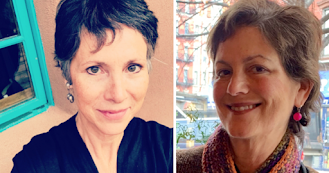
OPEN CALL
12th International Juried Digital Print Exhibition
organized by Art & Science Collaborations, Inc. (ASCI)
to be held at the New York Hall of Science
October 3, 2010 - January 31, 2011
Our blue planet, spinning like a jewel in our solar system, has been perceptually defined by the technology of each era, from believing the Earth was flat, to the scientific understanding that it spins on its axis and has gravitational pull, to being part of just one of many solar systems. In terms of scale, humans are too small to viscerally comprehend our planet’s magnitude and the dynamics of its interconnected physical systems. We therefore break the concepts down into smaller parts, collect data and physical specimens of all kinds, and invent instruments to measure and track physical phenomena like earthquakes, tornados, and hurricanes. However, we still cannot grasp the “big picture” of planet Earth unless we read, look at photos, and finally… use our imagination to help envision/conceptualize it!
We invite artists and scientists to submit original digital prints that reflect their perceptions of our planet. Are these perceptions changing as we learn more about Earth from explorers, scientists, and artists? What is the relationship between all living things and planet Earth? What images are evoked by calling it the blue planet or the peaceful planet or the changing planet? What is the human impact on the whole planet? What is our concern for its future?
The museum furnishes the frames (18"x24"); If selected, just send your digital print(s) in a cardboard tube!
ENTRY DEADLINE: August 16, 2010
Details & Submissions online only:
http://www.asci.org/artikel1102.html



















